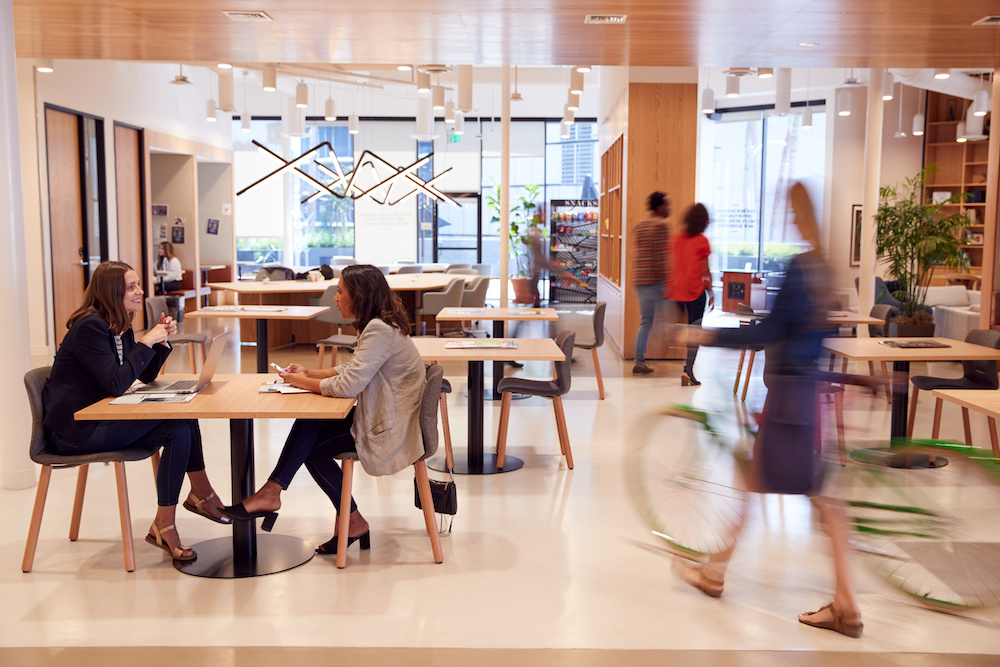
You’ve heard about open offices, sustainable buildings, and modern workplaces. Chances are, you’ve tried switching to one of those in the past, perhaps mainly in the hope of increasing productivity and collaboration among your employees and colleagues. But have you heard about flexible workspaces yet? If not, continue reading because they might be something you’d want to try for your business.
Flex It, Work It
A flexible workspace, also called flex space, encompasses different types of workspaces, from hot desks and coworking spaces to shared offices and serviced offices. Basically, you can say that a facility or establishment is a flexible workspace if it offers employees and teams maximum flexibility on many levels. From the way they work to their schedules and means of communicating, workers are given enough freedom to do certain things without sacrificing the quality of work.
Some businesses transform their own office into a flex space, while others turn to flexible office spaces for rent or lease. Whichever you choose, the goal is to maximize flexibility in certain aspects of your business.
If you don’t have the slightest idea on how you can make the transformation happen, here are some hacks and tips you could try:
-
Designate Open And Quiet Areas
Noise is an inevitable thing in the workplace, especially during the busiest times of the day. As a result, employees find it difficult to concentrate or even breathe for a moment. They may feel overwhelmed, distracted, and disoriented in different ways. To create a flexible and conducive work environment, you can designate open and quiet areas where staff members can relax or take a breather.
Aside from open spaces such as cafeterias or reception areas for break times, you can assign a quiet room where people can go to focus more on their work and get things done. The room should be a place where making loud noises is prohibited so that employees will be aware it’s an option they can go for whenever they feel like the noise is becoming unbearable.
-
Make Your Workstations Adaptable
A flexible office space means employees can work in their preferred positions. This involves workstations that are adaptable and non-traditional to accommodate the needs of your team. A good idea is to add more standing stations aside from the conventional desks you already have in the office.
Sitting too much can bring harmful effects to your employees, such as bad posture and increased risk of acquiring health issues. Standing desks won’t only potentially improve productivity and mood but may also help in lowering or preventing certain health risks such as obesity, weight gain, and heart disease. To add, these desks can aid in alleviating neck and back pain among workers.
You may want to look into ergonomic chairs and desks that can significantly help increase flexibility and adaptability in your office. With the latest models on the market, you can adjust the height of the furniture so employees can easily switch from sitting to standing while working.

-
Upgrade Your Amenities
Amenities are already a common feature in office buildings. However, if you want to level up your game and make a flexible transformation, consider upgrading your amenities to keep your employees happy and satisfied. They may be enjoying the unlimited coffee, but they’d love it even more if, for example, there’s unlimited soda for everyone as well.
Cafes should always have adequate stocks and supplies so employees won’t be disappointed when the coffee runs out and it’s an extra busy day for everyone. Look into elevating lounge experience, too, if you want to promote comfort and flexibility in different ways. Toilets should have fully functional features that aren’t usually found in public lavatories or other buildings. If you have the budget for it, adding a recreational or fitness facility is another great idea that your team would surely enjoy and benefit from.
-
Support Flexible Mobility
Nowadays, employees find it more seamless and flexible to work using mobile technology. Given that tablets, laptops, and smartphones are highly accessible, getting things done no longer requires strict desk hours and desktop computer time. If you want to foster flexibility in the workplace, you need to make staff members feel that you’re ready to support greater and more flexible mobility.
You can do so by providing fast and reliable wireless internet connection in all departments. This may prove to be quite tricky if you have a spacious building with multiple levels. Speak with an IT professional to make it work if you must. You should also look into reputable internet service providers (ISPs) in the area that can offer the solutions your office space needs.
Conclusion
Flexible workspaces are taking over more and more businesses. It’s a trend that’s not likely to go away anytime soon because of the benefits it can provide to companies and employees alike. If you want to make the switch, you can consider the tips above to foster flexibility in your office.
You may be interested in: 5 Tips for Finding the Best Office Spaces to Rent

